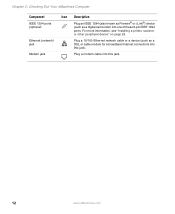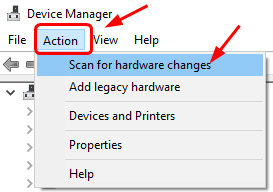

- #T3256 AUDIO SOUND DRIVER SERIAL#
- #T3256 AUDIO SOUND DRIVER DRIVERS#
- #T3256 AUDIO SOUND DRIVER DRIVER#
- #T3256 AUDIO SOUND DRIVER 32 BIT#
- #T3256 AUDIO SOUND DRIVER SOFTWARE#
At the "This system must be restarted to complete the installation" screen, click "OK" to restart the computer.Īfter the computer restarts, the installation of the Realtek High Definition Audio Driver is complete.At the "Finish" screen, click "Finish".At the "License Agreement" dialog, read the agreement, then, if you agree, click "I Agree" to continue with the installation.At the "Realtek High Definition Audio Ver.At the "Select Country" screen, select the country for this installation, and then click "Next".If the "Select Language" screen appears, select the language you wish to use, and then click "OK". 3D SoundBack Beta 0.1 (Realtek 3D SoundBack restores audio effects, including surround sound, reverberation, and spatial effects, for legacy game titles when running on Windows Vista.) Beta 0.1.At the "User Account Control" screen, click "Yes".Go to the directory where the file was downloaded and double-click the EP0000551787.exe file to begin the installation.Download the EP0000551787.exe file to a temporary or download directory (please note this directory for reference).The Taskbar should be clear of applications before proceeding. To ensure that no other program interferes with the installation, save all work and close all other programs.After that my sound card driver become incompatible with the laptop.
#T3256 AUDIO SOUND DRIVER 32 BIT#
All of the driver components shown in the figure are provided by Microsoft with the operating system. Audio & Driver incompatibility:Hello I installed the new version of windows 10 32 bit the 10 may upgrade. It works with ATI and ATI Radeon chipsets that support the following codecs: ALC882, ALC883, ALC885, ALC886.
#T3256 AUDIO SOUND DRIVER SOFTWARE#
The following figure shows the driver hierarchy for a USB audio device. Hdmi driver for windows 7 - The ATI HDMI Audio Device Driver is a software complement to your sound card that enables you to benefit from your PCs audio capabilities. In addition, Windows Me and Windows XP support USB MIDI but do not support USB MIDI Elements.

In Windows Me, and Windows XP and later, USBAudio supports all the features that are supported in Windows 98 SE and Windows 2000. In Windows 98 Second Edition (SE), Windows Me, and Windows 2000 and later, USBAudio supports all the same features as Windows 98, with one exception: USBAudio supports WAVEFORMATEXTENSIBLE but does not support packed WAVE_FORMAT_PCM for 24-bit data. WAVEFORMATEXTENSIBLE wave format (USBAudio uses packed WAVE_FORMAT_PCM for 24-bit data instead.) However, USBAudio in Windows 98 does not support: Synchronization types synchronous and adaptive A collection of links to the official websites of manufacturers, secure download of the current drivers.
#T3256 AUDIO SOUND DRIVER DRIVERS#
In Windows 98, the USBAudio driver supports the following features:Īll Type I formats (except 8-bit signed PCM) Sound Card Intel Drivers - The most up to date database of drivers ever. Microsoft recommends that hardware vendors use the USBAudio driver for their USB Audio devices instead of writing proprietary adapter drivers. This means that a device that complies with the USB audio specifications requires no proprietary adapter driver. USBAudio drives the device directly, without the aid of a proprietary adapter driver. When an audio device identifies itself as USB Audio-compliant during Plug and Play device enumeration, the system automatically loads the USBAudio driver to drive the device. I tried to reinstall the driver but it still doesnt work, if someone has a solution itll be a great help. Support for MIDI devices was added in Windows Me. Windows 11 - Sound Driver Hello, Ive upgraded to Windows 11 recently but my sound driver doesnt work. In Windows 98 Usbaudio.sys introduced support for USB devices such as speakers and microphones.

For more information, see Kernel-Mode WDM Audio Components. In addition to Usbaudio.sys, there are several other kernel-mode audio components in the Windows Driver Model (WDM). Usbaudio.sys supports a subset of the features that are described in the USB Audio specification. The USB Device Class Definition for Audio Devices specification (release 1.0) is available at the USB Implementers Forum website. SysAudio's clients include DirectSound and the. For more information about the system audio driver, see SysAudio System Driver. The system audio driver (SysAudio) uses the available hardware and software components to determine the filter graphs to build.
#T3256 AUDIO SOUND DRIVER SERIAL#
The USB Audio class system driver (Usbaudio.sys) is an AVStream minidriver that provides driver support for audio devices that comply with the Universal Serial Bus (USB) Device Class Definition for Audio Devices. Virtual audio devices represent the filter graphs that render and capture audio content.


 0 kommentar(er)
0 kommentar(er)
